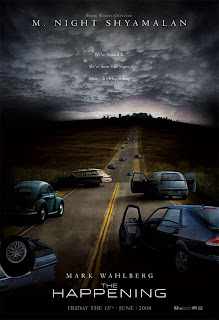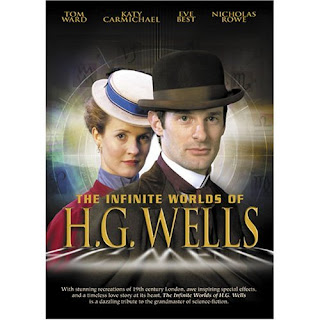
I wanted to do something special for the fiftieth installment of this feature, which is kind of difficult since how can any “random” report be special? But this qualifies. It’s random because I came across the DVD at a Vintage Stock, but it’s special because this is a bit of an old favorite. KINGDOM OF THE SPIDERS was a film that both terrified and fascinated me when I was much younger, and it pretty much has that same quality now. I’m not an arachnophobe by any means, but spiders can in certain circumstances give me the willies. And hundreds of them crawling all over people and leaping at your face and biting away will no doubt terrify anyone. It goes without saying that arachnaphobics shouldn’t see this movie; Hell, I apologize for that last sentence and for including the DVD cover. Of course, spider... enthusiasts, I guess is the word, might not want to see this movie, for reasons I’ll get into later. But beyond the basic “spiders EVERYWHERE” element, this is a solid thriller that’s decently written, makes good use of its modest budget, and contains a genuinely good performance by William Shatner (well, mostly good.)
The Shat, as he has come to be known, plays “Rack” Hansen, a veterinarian in the small Arizona town of Verde Valley. He’s called out to look at a sick calf owned by Walter Colby (Woody Strode), a struggling farmer hoping to win a prize at the upcoming county fair. The calf dies quickly, and a baffled Hansen sends a saliva sample out to be examined; the local university sends out an astoundingly good-looking entymologist named Diane Ashley (Tiffany Bolling), who has figured out that the calf died from a massive overdose of spider venom. It seems the local tarantulas, their normal food sources killed off by DDT and other pesticides, are ganging up together (something spiders normally don’t do) to bring down larger prey. Colby destroys the “spider hill” next to his farm, but it soon becomes clear the spiders are in this for the long haul, and work their way up to human targets. Soon the entire town is under siege, and just in time for the fair. Oops.
It’s not hard to pick up elements of JAWS and THE BIRDS in this story, and it particularly mirrors the latter in its gradual build-up to the scenes where the animals start attacking. The pace of the film is quite deliberate, and takes a while to really get going. The good news is that the early scenes are really quite entertaining; the characters are nicely defined in that broad suspense thriller way, and more importantly they’re likable. The writing is solid, even clever at times, and though some scenes don’t immediately move the story along they do establish the people and the town in a way that makes the attack resonate more (again, this seems to be a common tack in “nature’s revenge” movies, and may be what I felt was missing in CLOVERFIELD: a sense of community.)
When the spiders finally commence to attackin’, it’s pretty intense, and it may be for the best that the film gives us a breather beforehand. The filmmakers coralled hundreds of the spiders by putting up a general offer for $10 per tarantula, and you can honestly tell that there are a lot of real spiders running around, even in shots where they might have gotten away with fakes (of which there are a few as well). Sadly, as this was a low budget production and done before the ASPCA vetted such things very carefully, it’s plainly obvious that a number of spiders are getting stepped on, thrown from heights or otherwise sent to their maker. Heck, even putting so many tarantulas together on screen was probably hazardous; they are, by nature, solitary and territorial creatures who don’t tolerate each other’s company for long. Some films have been banned in various countries for such blatant animal cruelty, and most famously the makers of the film LIZARD IN A WOMAN’S SKIN had to provide evidence to an Italian court that they had not in fact killed a dog on screen, and yet this film has never received the slightest reprimand or protest. I suppose it’s unfortunate that so many gave their lives, but what’s done is done. (It’s also a bit of a wonder that so many actors and extras consented to being covered in spiders.)
It’s interesting to see how the spiders are actually used on film; since they can’t be trained, the film can’t be terribly elaborate in showing the spiders creeping up on and overruning their prey (except in an early scene using a number of “spider-cam” shots). Instead, they simply seem to materialize, not so much moving as manifesting, which itself is pretty freaky. I suppose this is the root of arachnophobia; a spider generally won’t be inclined to leap at you and bite you, but that they could if they wanted to has to give somebody pause. (Of course, tarantula bites are much like bee stings, painful but harmless unless you’re allergic.) At one point, a recently attacked vacationer says, “One moment they weren’t there, and the next moment they were everywhere!” The simple wrongness of this is very effective.
As I’ve said before, this film gives us William Shatner, an actor who can go from easygoing to scenery-chewing in seconds flat, in one of his better turns. I think at heart the key to Shatner’s acting is that he was trained theatrically; whenever he has a Big Moment, it’s best not to be too close to the screen. There are a couple of scenes like that here, but for the most part Rack is a level headed guy, and so Shatner is mostly in his charismatic, affable mode. He seems to be having some fun, and Bolling makes a nice foil for him. Shatner’s then-wife even shows up, as Rack’s widowed sister-in-law who carries a bit of a torch, and at some point she also ends up overrun by spiders. Somehow the two stayed together for 17 years after this, so make of that what you will. Western veteran Strode is one of many solid character actors rounding out the lineup. The music is interesting, some of it recognizable from old TWILIGHT ZONE episodes while other material seems to be needle-drop, except for four original songs by country artist Dorsey Burnette, including the oddly upbeat opening theme “Peaceful Verde Valley.” He’s actually kind of good, albeit totally out of place.
KINGDOM OF THE SPIDERS is not a great movie, and the debate over whether it was worth dozens of arachnid soul may not be settled anytime soon (bear in mind I’m not even sure if any such debate has taken place.) But it’s a great example of low budget horror filmmaking done right, using a limited number of resources- in this case, Shatner, a country musician, a modest stunt budget, and thousands of tarantulas- to create a genuinely scary experience. Honestly, it’s a shame there hasn’t been a Special Edition DVD yet.
Story by Stephen Lodge and Jeffrey M. Sneller
Written by Richard Robinson and Alan Caillou
Directed by John “Bud” Cardos
Grade: B+




